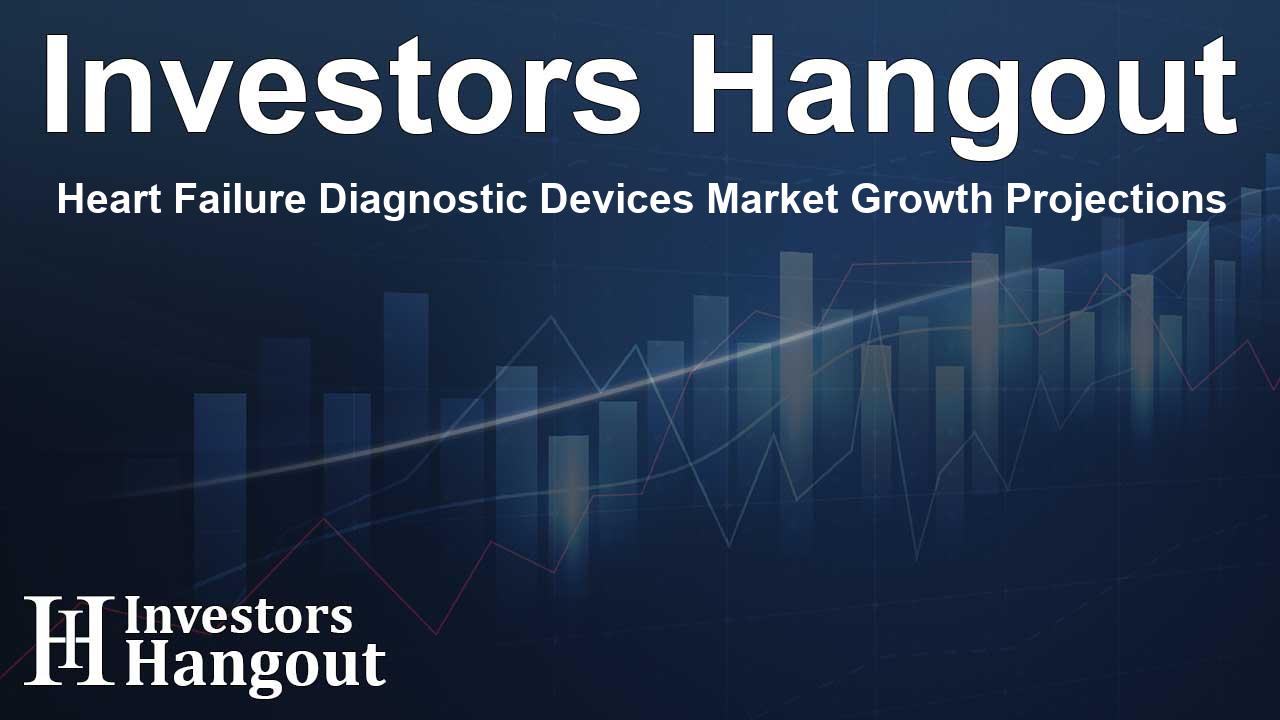Heart Failure Diagnostic Devices Market Growth Projections

Overview of the Heart Failure Diagnostic Devices Market
The Heart Failure Point-of-Care (POC) and Lab-on-Chip (LOC) devices market is on a substantial growth trajectory, driven by the escalating demand for early diagnosis and continuous monitoring of heart failure. Heart failure is a chronic condition that frequently requires timely intervention to enhance patient outcomes. The adoption of POC and LOC devices is increasing in healthcare settings like hospitals, outpatient clinics, and even home care, where prompt diagnostic results can significantly alter the course of treatment.
Growth Drivers Influencing the Market
Several factors are propelling the expansion of the heart failure diagnostic devices market. Technological advancements in diagnostic technologies have led to a stronger inclination towards early detection. The integration of artificial intelligence (AI) and machine learning (ML) is revolutionizing these devices, enhancing their predictive capabilities. Healthcare providers are empowered to take proactive measures, helping to identify potential health deteriorations before they escalate.
Decentralized Healthcare Solutions
As healthcare continues to evolve towards more decentralized models, the convenience of these devices has gained recognition. Patients can now monitor their heart health at home, making diagnoses easier and more efficient. This capability not only reduces the burden on healthcare systems but also increases patient autonomy in managing their health. With the support of public and private investments, manufacturers are producing smaller, user-friendly devices, encouraging widespread adoption.
Advancements in Diagnostics
The need for enhanced heart failure management is recognized globally, compelling healthcare systems to improve the efficacy of their diagnostic capabilities. With rapid improvements in technology, diagnostic devices are offering better management of heart conditions by potentially decreasing hospital admissions and enhancing survival rates for patients diagnosed with heart failure.
Market Segmentation
The heart failure diagnostic devices market can be segmented comprehensively:
By Test Type
- Proteomic Testing
- Metabolomic Testing
- Genomic Testing
By Technology
- Microfluidics
- Array-Based Systems
- Others
By End-Use
- Clinics
- Hospitals
- Home Care
- Assisted Living Facilities
- Laboratories
Regional Insights
In 2023, North America took the lead in the heart failure POC and LOC devices market, largely due to its advanced healthcare infrastructure and high levels of awareness around heart conditions. This region's growth is further supported by significant public and private sector investments in healthcare technology. The trend of adopting POC and LOC devices is proliferating in both hospital and home care environments, underpinning the need for timely and effective patient diagnosis.
Growth in Europe and Asia Pacific
Following North America's lead, Europe is witnessing increased healthcare spending and rising rates of chronic diseases, particularly heart-related ailments. Germany and the UK are notable for their amplified demand for accurate diagnostics. Meanwhile, the Asia Pacific region is positioning itself as a crucial market player, supported by increasing investments in healthcare technology and higher incidences of heart failure.
Recent Developments in the Market
Key advancements are emerging in the heart failure diagnostic devices market:
- Innovative Surgical Procedures: A recent breakthrough saw a university hospital perform a surgical implantation of a new ventricular assist device (VAD), marking substantial progress in heart failure treatments.
- Prototyping Cutting-Edge Tests: The development of a point-of-care electrochemical biosensor has been announced, allowing rapid biomarker screening using minimal samples, thereby enhancing accessibility and convenience.
- New Diagnostic Tools: Launches such as tests for diabetic patients on POC devices are set to improve early detection and interventions dramatically.
Conclusion
The heart failure POC and LOC devices market is poised for remarkable growth due to the increasing demand for early detection, advances in decentralization, and cutting-edge technology. As the field continues to innovate with new test types and technologies, including various testing methodologies and microsystems, it is well-equipped to improve patient care significantly. This ongoing evolution not only promises better management of heart conditions but also enhances the overall patient experience.
Frequently Asked Questions
What is the expected market size for heart failure diagnostic devices by 2032?
It is projected that the heart failure diagnostic devices market will reach USD 401.91 million by 2032.
What factors are driving growth in this market?
Key growth drivers include the rising demand for early detection, advancements in technology, and the shift towards decentralized healthcare.
Which segments are currently dominating the market?
Proteomic testing is the dominant segment, accounting for a significant share of the market.
How has AI impacted heart failure diagnostics?
AI has enhanced the predictive capabilities of diagnostic devices, enabling more proactive healthcare interventions.
What regions are leading in the adoption of these devices?
North America currently leads the market, but Europe and Asia Pacific are emerging as significant areas of growth.
About The Author
Contact Ryan Hughes privately here. Or send an email with ATTN: Ryan Hughes as the subject to contact@investorshangout.com.
About Investors Hangout
Investors Hangout is a leading online stock forum for financial discussion and learning, offering a wide range of free tools and resources. It draws in traders of all levels, who exchange market knowledge, investigate trading tactics, and keep an eye on industry developments in real time. Featuring financial articles, stock message boards, quotes, charts, company profiles, and live news updates. Through cooperative learning and a wealth of informational resources, it helps users from novices creating their first portfolios to experts honing their techniques. Join Investors Hangout today: https://investorshangout.com/
The content of this article is based on factual, publicly available information and does not represent legal, financial, or investment advice. Investors Hangout does not offer financial advice, and the author is not a licensed financial advisor. Consult a qualified advisor before making any financial or investment decisions based on this article. This article should not be considered advice to purchase, sell, or hold any securities or other investments. If any of the material provided here is inaccurate, please contact us for corrections.
